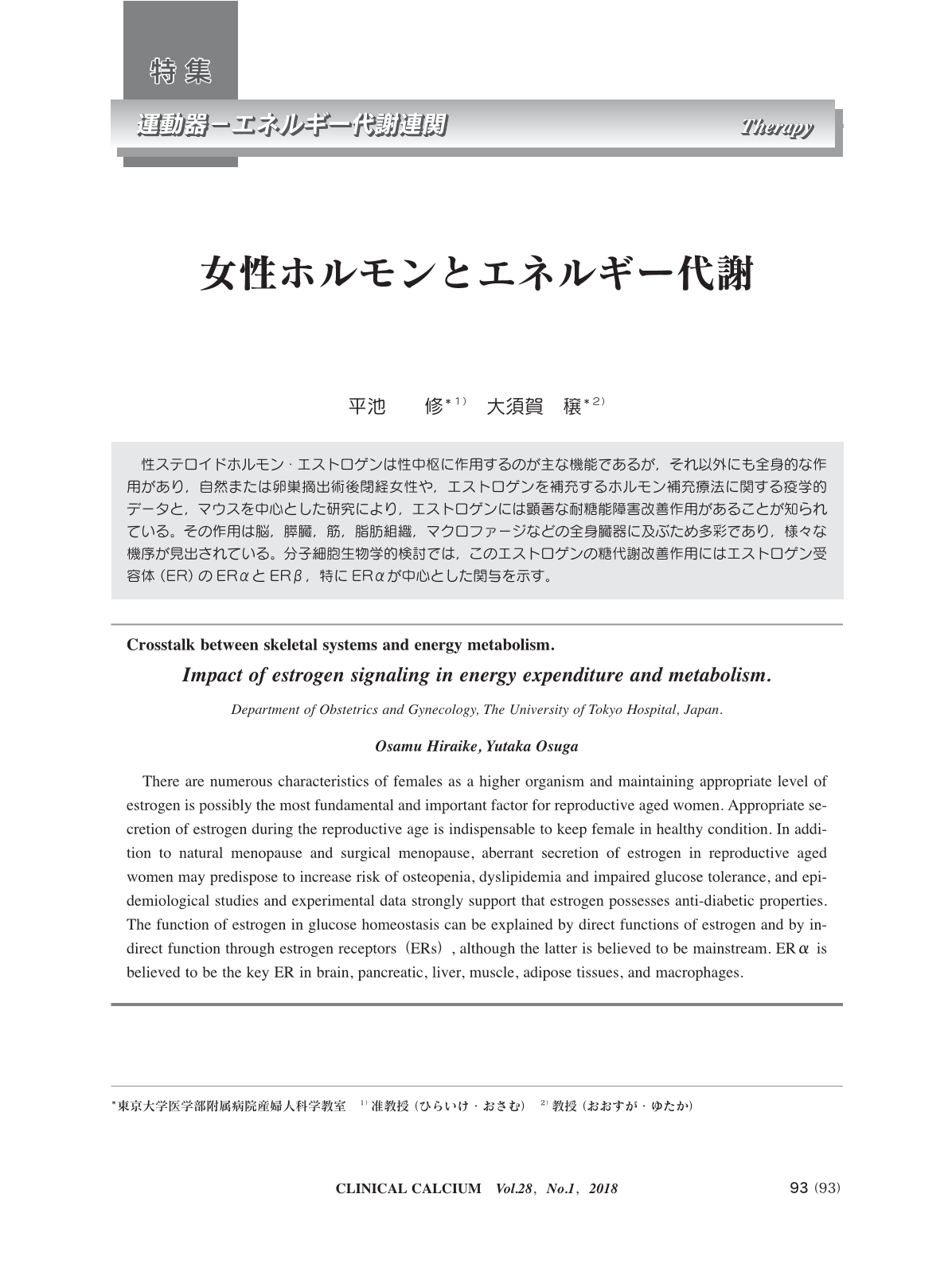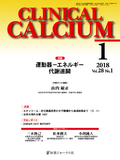Japanese
English
- 有料閲覧
- Abstract 文献概要
- 1ページ目 Look Inside
- 参考文献 Reference
性ステロイドホルモン・エストロゲンは性中枢に作用するのが主な機能であるが,それ以外にも全身的な作用があり,自然または卵巣摘出術後閉経女性や,エストロゲンを補充するホルモン補充療法に関する疫学的データと,マウスを中心とした研究により,エストロゲンには顕著な耐糖能障害改善作用があることが知られている。その作用は脳,膵臓,筋,脂肪組織,マクロファージなどの全身臓器に及ぶため多彩であり,様々な機序が見出されている。分子細胞生物学的検討では,このエストロゲンの糖代謝改善作用にはエストロゲン受容体(ER)のERαとERβ,特にERαが中心とした関与を示す。
There are numerous characteristics of females as a higher organism and maintaining appropriate level of estrogen is possibly the most fundamental and important factor for reproductive aged women. Appropriate secretion of estrogen during the reproductive age is indispensable to keep female in healthy condition. In addition to natural menopause and surgical menopause, aberrant secretion of estrogen in reproductive aged women may predispose to increase risk of osteopenia, dyslipidemia and impaired glucose tolerance, and epidemiological studies and experimental data strongly support that estrogen possesses anti-diabetic properties. The function of estrogen in glucose homeostasis can be explained by direct functions of estrogen and by indirect function through estrogen receptors(ERs), although the latter is believed to be mainstream. ERα is believed to be the key ER in brain, pancreatic, liver, muscle, adipose tissues, and macrophages.



